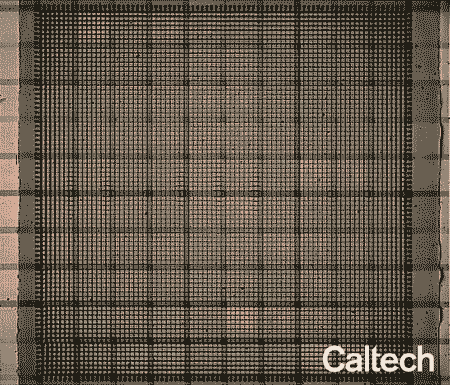Continuing our series on the historical interaction between Western astronomy and Indigenous communities, this post discusses ALMA and other observatories in Chile.



In recent years, a steadily increasing volume of data has demonstrated that peer victimization — the clinical term for bullying — impacts hundreds of millions of children and adolescents, with the effects sometimes lasting years and, possibly, decades. The problem is even recognized as a global health challenge by the World Health Organization and the United Nations. And yet, researchers maintain there is still a limited understanding of how the behavior may physically shape the developing brain.
Just months after closing out the 15-year-long Opportunity rover mission on Mars, Cornell University astronomer Steve Squyres is taking advantage of a new opportunity: the post of chief scientist at Amazon billionaire Jeff Bezos’ Blue Origin space venture.
Today Blue Origin confirmed that Squyres, 63, will be joining the company, which is headquartered in Kent, Wash.
Squyres has been involved in NASA space missions including Voyager’s trip past the solar system’s giant planets and Magellan’s voyage to Venus. But his main claim to fame is his stint as principal investigator for the Mars Exploration Rovers.

A newly developed type of architected metamaterial has the ability to change shape in a tunable fashion.
While most reconfigurable materials can toggle between two distinct states, the way a switch toggles on or off, the new material’s shape can be finely tuned, adjusting its physical properties as desired. The material, which has potential applications in next-generation energy storage and bio-implantable micro-devices, was developed by a joint Caltech-Georgia Tech-ETH Zurich team in the lab of Julia R. Greer.
Greer, the Ruben F. and Donna Mettler Professor of Materials Science, Mechanics and Medical Engineering in Caltech’s Division of Engineering and Applied Science, creates materials out of micro- and nanoscale building blocks that are arranged into sophisticated architectures that can be periodic, like a lattice, or non-periodic in a tailor-made fashion, giving them unusual physical properties.

Work on Blue Origin’s New Glenn launch complex – LC-36 – is well underway. Recent aerial imagery of Cape Canaveral from NOAA shows how far Blue has come on the launch complex. Meanwhile, the company is also working on an engine factory in Alabama, and a first stage refurbishment facility near Kennedy Space Center.
LC-36 – from Atlas-Centaur to New Glenn
LC-36 was originally constructed to launch the Atlas-Centaur – with its revolutionary liquid hydrogen-powered upper stage. The complex hosted its first launch on May 18, 1962. Due to the Atlas-Centaur’s increasing flight rate – and low reliability early on – a second pad – LC-36B – was built near the existing LC-36A.

SpaceX is gearing up for its biggest launch yet.
The company filed paperwork with the Federal Communications Commission, requesting permission to communicate with the upcoming first generation of its Starship spacecraft up to an altitude of 22.5 km (74,000 feet) at its South Texas launch site.
According to SpaceX CEO Elon Musk, the first test flight of the next-gen craft could take place as soon as October.

A bio-inspired bot uses water from the environment to create a gas and launch itself from the water’s surface.
The robot, which can travel 26 metres through the air after take-off, could be used to collect water samples in hazardous and cluttered environments, such as during flooding or when monitoring ocean pollution.
Robots that can transition from water to air are desirable in these situations, but the launch requires a lot of power, which has been difficult to achieve in small robots.

We can evolve bacteria, plants and animals. Is it ethical to evolve the human body? I say yes.
And it becomes a moral imperative because it’s going to be really hard to live on Mars if we don’t fundamentally modify the human body. Right? You go from one cell, mom and dad coming together to make one cell, in a cascade to 10 trillion cells. We don’t know, if you change the gravity substantially, if the same thing will happen to create your body. We do know that if you expose our bodies as they currently are to a lot of radiation, we will die. So as you’re thinking of that, you have to really redesign things just to get to Mars. Forget about the moons of Neptune or Jupiter.
And to borrow from Nikolai Kardashev, let’s think about life in a series of scales. So Life One civilization is a civilization that begins to alter his or her looks. And we’ve been doing that for thousands of years. You’ve got tummy tucks and you’ve got this and you’ve got that. You alter your looks, and I’m told that not all of those alterations take place for medical reasons.
Seems odd.
A Life Two civilization is a different civilization. A Life Two civilization alters fundamental aspects of the body. So you put human growth hormone in, the person grows taller, or you put x in and the person gets fatter or loses metabolism or does a whole series of things, but you’re altering the functions in a fundamental way.

“Everyone is searching for a magic pill that will cure ageing,” explains Richard Siow, who heads up ageing research at King’s College London. “The truth is, lifestyle and diet changes are the most realistic way to extend your life. You can’t just adopt these as you get older. You need to start young – we’re ageing from the moment we’re born.”
Of course, diet and exercise alone won’t enable humans to achieve immortality. We profile the scientists and startups trying to hold back time.